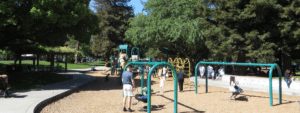The Strategies for Fiscally Sustainable Infill Housing report, released by The Center for Community Innovation, helps housing advocates and city staff better understand the relationship between a city’s fiscal health and building homes within already urbanized areas.
The benefits of walkable, infill communities are many – more affordable and convenient places to live and ways to get around, greenhouse gas reduction, and improved community health to name a few. However, in order to achieve the goal of more infill homes, a city’s costs and revenues need to match up. Without new revenue sources, cities cannot accommodate California’s growing population, leading to sprawl.
Part I of the report provides an introduction to city general revenues and expenses associated with infill housing development. Part II describes strategies that California cities can use to raise additional revenues from housing development. Part III looks specifically at the City of San Jose as a case study of how a city might promote fiscally sustainable infill housing development.
Greenbelt Alliance policy director Stephanie Reyes served as a key advisor for The Center for Community Innovation report. The center works to find effective solutions that expand economic opportunity, diversify housing options, and strengthen connection to place. Download the full report here (PDF).




